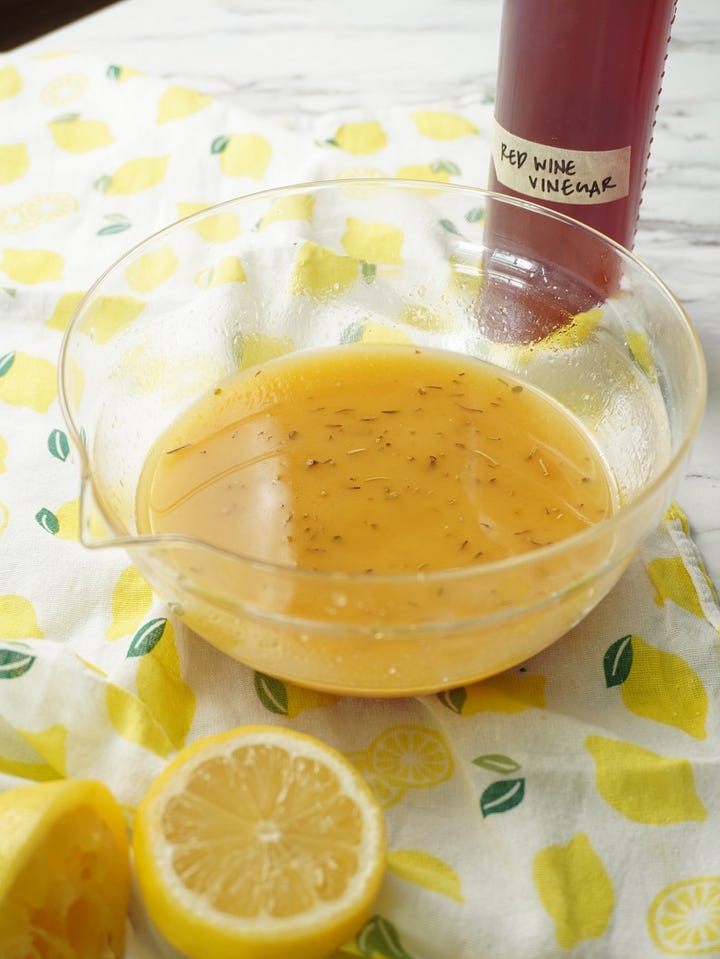science explained - why this pasta is better for your blood sugar
a way to never cut out pasta
When I was initially diagnosed with insulin resistance, my doctor instructed me to cut out carbs from my diet.
While this is a great solution for some people (and has actually led to reversing insulin resistance in some cases), cutting out an entire food group is just not realistic for most of us.
If you are someone who exercises a lot and are generally active, you need carbs to fuel all that movement.
For those of us with blood sugar disorders, our bodies don’t process carbs as efficiently as we’d like them to. This doesn’t mean we can’t enjoy them, but instead means we need to find ways to incorporate carbohydrates into our diet without blood sugar spikes or crashes.
This is what led to me finding out about resistant starch. I began learning how I could implement it into my diet to fit my lifestyle, while still enjoying my favorite foods, like pasta. :)
In today’s lesson, we’ll learn about what resistant starch is, how it works, and ways we can use it to reduce blood sugar while fueling our bodies.
Before we can comprehend what resistant starch is, we must first understand what regular starch is.
There are three types of carbohydrates: sugar, starch, and fiber
Sugar consists of one or a few glucose molecules, are fairly easy to digest, and are found in foods like soda or candy.
Starch is a ‘complex’ carbohydrate made up of many glucose molecules, making it slower to break down. It can only be found in foods made from plants or whole grains such as potatoes, wheat, or chickpeas.1
Fiber is the only type of carbohydrate that our bodies cannot break down because we simply do not possess the enzymes required to digest its complex makeup and structure.2
Today we will only focus on starch but will dive into the other types of carbohydrates in future lessons ;)
Resistant starch is a form in which the digestive enzymes in your stomach have a more difficult time breaking down the starch into glucose and releasing it into your blood stream.3
Traditional starch gets digested in the small intestine, whereas resistant starch must move into the large intestine (4).
- okay that was A LOT to digest lol -
But all you need to know is that resistant starch is more difficult to breakdown into sugar and therefore needs more time to digest, resulting in a slower increase in blood sugar.
The slower, the better.So the question is, how can we take advantage of this miraculous resistant starch in the foods we love?
While resistant starch does naturally exist in foods like unripe bananas, we can also ‘make’ resistant starch in our foods by a process known as retrogradation.
In the process of retrogradation, the starch molecules rearrange into a new structure that our digestive enzymes (in the small intestine) cannot breakdown.4
Basically, the starch doesn’t ‘fit’ anymore.
The easiest way to retrograde is to refrigerate.The cooled temperatures (such as in a fridge or freezer) are what cause the change in starch structure (3). In case you’re worried, no, reheating the food does not revert it back.
The most effective way to accomplish this is by cooking your carb source, such as pasta, and refrigerating it for 24 hours.5
However, from personal experience, refrigerating overnight (at least 8 hours) has also reduced my blood sugar levels after eating.
The longer you refrigerate, the more time starch has to turn into resistant starch.
HOW TO IMPLEMENT THIS
My favorite pasta recipe also takes advantage of another blood sugar hack
If you’ve ever eaten pasta salad, you’d know it’s a dish served cold. This means that the recipe naturally includes the process of refrigeration and developing resistant starch.
BUTTT
Pasta salad can become extra blood sugar friendly by the use of a vinaigrette.
Every vinaigrette uses vinegar. Surprising, right?
Vinegar’s main ingredient is acetic acid. Acetic acid slows down how quickly how quickly food gets digested from your stomach to the small intestine.
Because the small intestine is where carbs get broken down and released as sugar into your blood, your blood sugar increases slowly over time instead of a rapid spike.
TLDR — Vinegar has acetic acid which slows down increases in blood sugar so make the vinaigrette.
You can find my favorite vinaigrette recipe in my pasta salad recipe linked here.


HERE’S EXACTLY HOW I DO IT WITH PASTA
I’ll cook my pasta according to the box.
Once cooked, I’ll transfer it to a sheet tray and drizzle some oil on it. The sheet tray helps the pasta come to room temp faster and the oil prevents it from sticking together.
Once it’s cooled, I’ll transfer the pasta to an airtight container and transfer this to the fridge.
The next day, I’ll prepare my choice of sauce and throw the pasta directly into it while the sauce is still cooking. Alternatively, you can microwave the pasta prior to adding it, but this skips a step.
Make sure to add protein and fiber and you now have a balanced meal that doesn’t spike your blood sugar nearly as high or as quickly.
*when a reference is repeated, it will be noted in parentheses
https://www.ncbi.nlm.nih.gov/books/NBK218764/#:~:text=Lignin is a complex polymer,glucosidases (Southgate%2C 1982).







